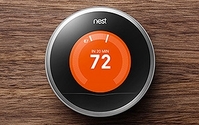Few Familiar With 'Internet Of Things'
- by Mark Walsh @markfwal, August 19, 2014
 The
Internet of Things is still early in the hype cycle, generating a lot of buzz in marketing circles around the potential for reaching consumers all the time and anywhere when everyday items are
connected to the Web.
The
Internet of Things is still early in the hype cycle, generating a lot of buzz in marketing circles around the potential for reaching consumers all the time and anywhere when everyday items are
connected to the Web. That’s before privacy, technology, security and other considerations are factored in. The gap between potential and reality is still a wide one when it comes to marketing via wearable devices and the connected home. New research from Acquity Group, an e-commerce and digital marketing agency owned by Accenture Interactive, found that only 19% of men, and 8% of women have heard the term “Internet of Things.”
The firm surveyed 2,000 people in the U.S. about their current and future adoption and perception of technologies that fall under the heading of IoT. Even if not familiar with the term itself, survey participants indicated plans to buy connected gear of various kinds in the coming years. Expected to gain the most traction are wearable fitness devices, with 22% already owning or planning to make a purchase by 2015.
Smart thermostats, like those made by Google-owned Nest, by next year, with connected security systems in 11%. Those figures are forecast to reach 43% each for fitness device and smart thermostats, and 35% for security systems. But that’s a long way out to predict with much accuracy.
Conversely, “smart clothing” and devices using heads-up displays — any transparent display that shows data without requiring users to look away from their usual viewpoints — drew the least interest, with only 3% planning to adopt in the next year, and 14% and 16% in the next five. That doesn’t bode well for Google Glass.
The Acquity Group study also found planned adoption rates varied by age group, gender and region. More than half (53%) of millennials, which the firm defines as those ages 18-25, plan to get an in-home IoT device in the next five years versus 35% of baby boomers. Generation X consumers (26-35) are the most likely to get wearable devices, followed by millennials and boomers.
Men are more apt to acquire wearable connected gear than women (53% to 45%), and in-home IoT technology (70% to 67%) by 2019.
Regionally, three-quarters (74%) of consumers living in the Northeast plan to purchase an in-home IoT device in the next five years, compared with 68% in the Midwest and 66% in the Southeast. The adoption of wearables across each of the three areas of the country is expected to break out more evenly, at between 55% and 58%.


